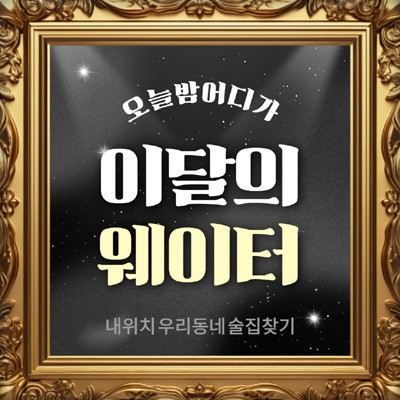Don’t Know Anything About Business? Read This Book And Best ADHD Medication For Adults It!
작성자 정보
- Melvin Petersen 메일보내기 이름으로 검색 작성
- 작성일
컨텐츠 정보
- 11 조회
-
목록
본문
While choosing the best ADHD medication for adults can be a challenge there are plenty of options. Learn about Atomoxetine, Guanfacine, and Stimulants. Each treatment has its advantages and disadvantages. In this article, you'll be able to determine which one is the most suitable for your particular situation. It's important to keep in mind that these methods are rarely 100% effective. You might want to try a brain-training program or regular meditation as an alternative to ADHD medication.
Guanfacine
One type of prescription medication that treats ADHD is the guanfacine. It is approved for children and adolescents aged between 6 and 17 years. It is also known as Intuniv and acts on specific receptors in the brain. The dosage of guanfacine is typically one to seven milligrams every day. Guanfacine ER is sold as an extended-release tablet for adults.
Guanfacine should never be given to children, just like any prescription medication. It should be kept at room temperature and not shared with anyone else. While sharing prescription medication is not legal, it is risky. Although Guanfacine doesn't cause any serious adverse effects but it can make people feel dizzy or dizzy. If you're taking medication to treat ADHD it is recommended to follow your doctor's instructions carefully.
The effectiveness of guanfacine suggests that it is an effective treatment for ADHD. The drug increases the amount of prefrontal cortex which regulate emotions and attention. Guanfacine could also increase the quantity and quality of connections between neurons in these areas. In addition, it is tolerated by patients, which is an important aspect in determining its efficacy.
Psychostimulants are now the standard of care for ADHD treatment. While guanfacine is an effective alternative to stimulants, it should be incorporated into a complete treatment plan that incorporates educational as well as psychological, social, and managing adhd without medication measures. It is considered to be an adjunctive therapy. Studies conducted on adults demonstrated that the effectiveness of guanfacine was higher when there were more patients than placebo-treated controls.
It also works in decreasing blood pressure and enhancing attention. It is a part of a comprehensive treatment plan for people suffering from attention deficit disorder. Extended-release Guanfacine can only acquired with a prescription from a physician. Like all medications, discontinuing the use of this drug will require gradual adjustment, so it's essential to consult your doctor prior to making any changes.
This drug is also used to treat other conditions. High blood pressure puts additional stress on the arteries and heart which increases the risk of stroke, heart attack and kidney failure. Guanfacine lowers blood sugar levels by relaxing blood vessel walls. It also lowers the risk of heart attacks and ADHD medication for adults strokes. This medication could be harmful for those who are allergic to it. This medication is not recommended for children under six years old.
Atomoxetine
Atomoxetine is the best medication for adults suffering from ADHD. The liver metabolizes this drug by the CYP2D6 protein. Atomoxetine is not recommended for those who are taking medications that inhibit CYP2D6. Monoamine oxidase inhibitors should be avoided if atomoxetine been used. It is essential to not begin treatment with an MAOI less than two weeks after stopping the atomoxetine.
Strattera is a second non-stimulant medication that helps treat ADHD. It is a norepinephrine receptor best adhd medication antagonist. It increases norepinephrine levels in the central nervous system and can help increase concentration and reduce hyperactive and impulsive behavior. It is less at risk of abuse and misuse than Ritalin and is more efficient than Ritalin.
It takes a longer time to demonstrate results. Atomoxetine is also known to cause negative side effects. It is reported that it can increase heart rate by five beats per hour , and diastolic blood pressure by 3 millimeters. It also decreased appetite and libido. These aren't major side effects, and should be considered in relation to the benefits of atomoxetine.
In one study, atomoxetine has been studied in adolescents and children who suffer from ADHD and ODD. The participants were randomly assigned to either atomoxetine or a placebo each other day. 297 subjects participated in the trial. Patients received atomoxetine in the dose of 1.8 mg/kg. Overall, both groups showed significant improvement in their symptoms, including the hyperactive-impulsive subscale. There were no significant differences in the rates of response between groups, however, the use of atomoxetine is associated with some side effects, including abdominal pain, somnolence, and fatigue.
ADHD is treated mostly using stimulants. They work exactly the same way as stimulants but don't have the psychoactive negative effects. Nonstimulants may also reduce blood pressure and heart beat. Regular use of nonstimulant medicines could increase the risk of suicide among kids, especially children. There are numerous warnings regarding their safety and should not be taken abruptly.
Atomoxetine is not without its disadvantages. Certain patients may notice an increase in blood pressure. It may take up to eight weeks before symptoms start improving. If your doctor suggests atomoxetine for you, take it even if you don't notice any improvement. It could take a few weeks for this medication to work and should not be stopped until your symptoms have improved significantly.
It is crucial to talk with your doctor about possible drug interactions prior to choosing the best ADHD medication for you. If you're on Strattera is a possible interaction with other medications including monoamine oxidase inhibitors and tricyclic antidepressants. You'll have to discuss the potential risks and benefits with your physician and then adjust your dose according to the interaction.
Stimulants
In addition to behavioral therapy, ADHD medication is a common method to treat symptoms. Around 70 percent of adults and 80 percent of children who suffer from ADHD respond to ADHD medications. ADHD medications can ease symptoms like hyperactivity, the inability to stop, interruptions, fidgeting, restlessness, and hyperactivity. Attention spans of patients and behavior also improve. These effects are also reflected in improved school performance and interpersonal relationships. For adults suffering from ADHD medications can be an effective remedy for a number of challenges such as attention span, social skills and an impulsive nature.
The use of stimulants may have side effects. The amount of stimulants you take should be adjusted according to your individual chemistry, not just the general rule of thumb. For adults, it's illegal to share prescription medications. Instead, talk about your medication with a medical provider to determine the best dose. You should gradually increase your dosage until you feel better. Additionally it is essential that the medication be taken on a regular schedule. A caregiver might be required to administer the medication to children who have ADHD. However, they shouldn't try to catch up a missed dose or delay it.
Adult ADHD medication stimulants are available in short- and long-acting forms. Short-acting stimulants are generally cheaper than their more powerful counterparts. They begin working within a matter of minutes and should be taken several times throughout the day to achieve an effect. Contrary to stimulants, they could wear off within a few days, which means that the treatment may not be as effective as it might have been.
Changes to your diet can help ease the symptoms of ADHD. Many people suffering from ADHD have reported better sleep quality. Simple adjustments to their routine can help them sleep better at the end of the night. Avoid drinking caffeine in the afternoon , and set an alarm clock for bed. A positive attitude is essential in managing ADHD symptoms. Positive attitudes will help you better comprehend your needs. It is important to remember that ADHD medication is a temporary remedy and is not an effective cure.
Adults who suffer from ADHD should consider pursuing a behavioral therapy prior to taking stimulant medication. Behavioral therapy and lifestyle modifications can be a great way for people suffering from ADHD to manage their symptoms. The use of stimulants is also a great way to treat ADHD in adults. ADHD treatment in adults can be achieved using the combination of therapy and behavior modification. In addition to treating your child's behavior you should be mindful of your screen time and keep up with regular physical exercise. Adult ADHD medication can be confusing, especially for those who are not aware of the condition. To make a better decision it is crucial to comprehend the differences between stimulant and non-stimulant medication.
It's a thorny issue to determine the efficacy of ADHD medication. While children and adolescents respond best to methylphenidate adults respond to stimulants like tricyclic antidepressants as well as amphetamines. Both treatments work well in ADHD however the long-term effects remain controversial. Do not rush to make a medical decision. It is important to consider all options before making the decision. Before you decide to give any medication to your child, make sure to consider their preferences.
Guanfacine
One type of prescription medication that treats ADHD is the guanfacine. It is approved for children and adolescents aged between 6 and 17 years. It is also known as Intuniv and acts on specific receptors in the brain. The dosage of guanfacine is typically one to seven milligrams every day. Guanfacine ER is sold as an extended-release tablet for adults.
Guanfacine should never be given to children, just like any prescription medication. It should be kept at room temperature and not shared with anyone else. While sharing prescription medication is not legal, it is risky. Although Guanfacine doesn't cause any serious adverse effects but it can make people feel dizzy or dizzy. If you're taking medication to treat ADHD it is recommended to follow your doctor's instructions carefully.
The effectiveness of guanfacine suggests that it is an effective treatment for ADHD. The drug increases the amount of prefrontal cortex which regulate emotions and attention. Guanfacine could also increase the quantity and quality of connections between neurons in these areas. In addition, it is tolerated by patients, which is an important aspect in determining its efficacy.
Psychostimulants are now the standard of care for ADHD treatment. While guanfacine is an effective alternative to stimulants, it should be incorporated into a complete treatment plan that incorporates educational as well as psychological, social, and managing adhd without medication measures. It is considered to be an adjunctive therapy. Studies conducted on adults demonstrated that the effectiveness of guanfacine was higher when there were more patients than placebo-treated controls.
It also works in decreasing blood pressure and enhancing attention. It is a part of a comprehensive treatment plan for people suffering from attention deficit disorder. Extended-release Guanfacine can only acquired with a prescription from a physician. Like all medications, discontinuing the use of this drug will require gradual adjustment, so it's essential to consult your doctor prior to making any changes.
This drug is also used to treat other conditions. High blood pressure puts additional stress on the arteries and heart which increases the risk of stroke, heart attack and kidney failure. Guanfacine lowers blood sugar levels by relaxing blood vessel walls. It also lowers the risk of heart attacks and ADHD medication for adults strokes. This medication could be harmful for those who are allergic to it. This medication is not recommended for children under six years old.
Atomoxetine
Atomoxetine is the best medication for adults suffering from ADHD. The liver metabolizes this drug by the CYP2D6 protein. Atomoxetine is not recommended for those who are taking medications that inhibit CYP2D6. Monoamine oxidase inhibitors should be avoided if atomoxetine been used. It is essential to not begin treatment with an MAOI less than two weeks after stopping the atomoxetine.
Strattera is a second non-stimulant medication that helps treat ADHD. It is a norepinephrine receptor best adhd medication antagonist. It increases norepinephrine levels in the central nervous system and can help increase concentration and reduce hyperactive and impulsive behavior. It is less at risk of abuse and misuse than Ritalin and is more efficient than Ritalin.
It takes a longer time to demonstrate results. Atomoxetine is also known to cause negative side effects. It is reported that it can increase heart rate by five beats per hour , and diastolic blood pressure by 3 millimeters. It also decreased appetite and libido. These aren't major side effects, and should be considered in relation to the benefits of atomoxetine.
In one study, atomoxetine has been studied in adolescents and children who suffer from ADHD and ODD. The participants were randomly assigned to either atomoxetine or a placebo each other day. 297 subjects participated in the trial. Patients received atomoxetine in the dose of 1.8 mg/kg. Overall, both groups showed significant improvement in their symptoms, including the hyperactive-impulsive subscale. There were no significant differences in the rates of response between groups, however, the use of atomoxetine is associated with some side effects, including abdominal pain, somnolence, and fatigue.
ADHD is treated mostly using stimulants. They work exactly the same way as stimulants but don't have the psychoactive negative effects. Nonstimulants may also reduce blood pressure and heart beat. Regular use of nonstimulant medicines could increase the risk of suicide among kids, especially children. There are numerous warnings regarding their safety and should not be taken abruptly.
Atomoxetine is not without its disadvantages. Certain patients may notice an increase in blood pressure. It may take up to eight weeks before symptoms start improving. If your doctor suggests atomoxetine for you, take it even if you don't notice any improvement. It could take a few weeks for this medication to work and should not be stopped until your symptoms have improved significantly.
It is crucial to talk with your doctor about possible drug interactions prior to choosing the best ADHD medication for you. If you're on Strattera is a possible interaction with other medications including monoamine oxidase inhibitors and tricyclic antidepressants. You'll have to discuss the potential risks and benefits with your physician and then adjust your dose according to the interaction.
Stimulants
In addition to behavioral therapy, ADHD medication is a common method to treat symptoms. Around 70 percent of adults and 80 percent of children who suffer from ADHD respond to ADHD medications. ADHD medications can ease symptoms like hyperactivity, the inability to stop, interruptions, fidgeting, restlessness, and hyperactivity. Attention spans of patients and behavior also improve. These effects are also reflected in improved school performance and interpersonal relationships. For adults suffering from ADHD medications can be an effective remedy for a number of challenges such as attention span, social skills and an impulsive nature.
The use of stimulants may have side effects. The amount of stimulants you take should be adjusted according to your individual chemistry, not just the general rule of thumb. For adults, it's illegal to share prescription medications. Instead, talk about your medication with a medical provider to determine the best dose. You should gradually increase your dosage until you feel better. Additionally it is essential that the medication be taken on a regular schedule. A caregiver might be required to administer the medication to children who have ADHD. However, they shouldn't try to catch up a missed dose or delay it.
Adult ADHD medication stimulants are available in short- and long-acting forms. Short-acting stimulants are generally cheaper than their more powerful counterparts. They begin working within a matter of minutes and should be taken several times throughout the day to achieve an effect. Contrary to stimulants, they could wear off within a few days, which means that the treatment may not be as effective as it might have been.
Changes to your diet can help ease the symptoms of ADHD. Many people suffering from ADHD have reported better sleep quality. Simple adjustments to their routine can help them sleep better at the end of the night. Avoid drinking caffeine in the afternoon , and set an alarm clock for bed. A positive attitude is essential in managing ADHD symptoms. Positive attitudes will help you better comprehend your needs. It is important to remember that ADHD medication is a temporary remedy and is not an effective cure.
Adults who suffer from ADHD should consider pursuing a behavioral therapy prior to taking stimulant medication. Behavioral therapy and lifestyle modifications can be a great way for people suffering from ADHD to manage their symptoms. The use of stimulants is also a great way to treat ADHD in adults. ADHD treatment in adults can be achieved using the combination of therapy and behavior modification. In addition to treating your child's behavior you should be mindful of your screen time and keep up with regular physical exercise. Adult ADHD medication can be confusing, especially for those who are not aware of the condition. To make a better decision it is crucial to comprehend the differences between stimulant and non-stimulant medication.
It's a thorny issue to determine the efficacy of ADHD medication. While children and adolescents respond best to methylphenidate adults respond to stimulants like tricyclic antidepressants as well as amphetamines. Both treatments work well in ADHD however the long-term effects remain controversial. Do not rush to make a medical decision. It is important to consider all options before making the decision. Before you decide to give any medication to your child, make sure to consider their preferences.
관련자료
-
이전
-
다음
댓글 0
등록된 댓글이 없습니다.












